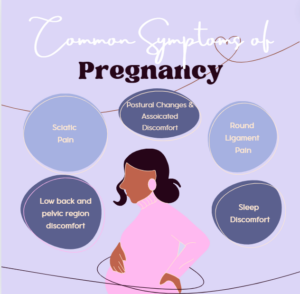Chiropractor for Pregnant Women Boulder
Chiropractic care can generate an immense change in a women’s pregnancy experience. Through utilizing the Webster Technique, a certified chiropractor guides the pelvis into its optimal alignment to promote a more comfortable pregnancy and encourage better positioning of the fetus. During pregnancy, the body goes through a plethora of changes at quite a rapid pace. Receiving prenatal chiropractic care is a way to combat the negative side effects that those changes can have on the body. Pregnancy is a natural and beautiful process and Atlas Chiropractic is here to make the process just a little bit easier.
Table of Contents
Toggle
Symptoms that can appear during pregnancy
- Nausea
- Back pain
- Neck pain
- Headaches
- Fatigue
- Heightened emotions
- Shortness of breath
- Foot pain
- Increased hunger
- Decreased hunger
- Swelling of feet
- Decreased concentration
Is chiropractic care safe during pregnancy?
When performed correctly and by a licensed doctor of chiropractic, chiropractic care is safe for pregnancy and is often recommended by obstetricians. The type of care that is given to a pregnant woman is gentle, specific and tailored to the pregnant body. Dr. Rimes from Atlas Chiropractic is trained in the Webster Technique, which was developed specifically for pregnant women. There is no torsion performed on the body and there is effective communication between the patient and the doctor. Chiropractic care can be very beneficial for both mom and baby when performed correctly by a certified and licensed doctor of chiropractic.
What is the Webster Technique?
As described by the International Chiropractic Pediatric Association (ICPA), “the Webster technique is a specific chiropractic analysis and diversified adjustment. The goal of the adjustment is to reduce the effects of subluxation and/or SI joint dysfunction. In so doing neuro- biomechanical function in the sacral/pelvic region is improved.” In short, this means that the Webster Technique has the main goal of encouraging alignment of the sacroiliac (SI) joint to promote better positioning and function of the sacral/pelvic region as the body prepares for birth. While this technique is known for its benefits to pregnancy, parts to this technique are actually utilized for any weight-bearing individual. This technique consists of non-invasive tests to assess mobility of the joints and light, specific adjustments. In addition to having focus on joint alignment, the technique also focuses on the torsion and tension that several soft tissues (muscles, ligaments and tendons) experience during pregnancy. This, in conjunction with misalignment relief, supports the body in creating a more comfortable pregnancy experience.
How soon should I let my chiropractor know that I am pregnant?
If you are currently trying to get pregnant, it is actually recommended to let your chiropractor know if you are comfortable doing so. Your chiropractor will be a part of your prenatal wellness team and they are able to provide nutritional advice and advice on possible lifestyle changes to assist in the process. Also, while your chiropractor might already be utilizing some parts of the Webster Technique, they can utilize all of the moves to encourage healthy pelvic alignment and a decrease in soft tissue tension in the areas most heavily impacted by pregnancy. When it comes to letting your chiropractor know when you ARE pregnant, you should do so at the next appointment you have after receiving the positive test. Pregnancy is a very important state of health and all of your providers should know when you are pregnant. Implementing the entire Webster Technique, as well as making any modifications to care, is the best path of care for the entire duration of the pregnancy. Transparency is key when it comes to receiving safe and effective healthcare.
How often should I see my chiropractor during pregnancy?
While this is generally up to the methods of the provider, in general, care will usually increase in a “ladder” type fashion. Meaning, in the beginning you will most likely come in once a week or once every other week, but as the pregnancy progresses the amount of appointments will progress. The reasoning for this is that as hormones rise and the body starts to become lax in preparation for childbirth (due to hormones like relaxin), the joints get out of alignment easier. Also, as hormones change a plethora of other nervous system related symptoms can occur–such as headaches, nausea and fatigue–and chiropractic care can help with those symptoms. The further you get into pregnancy, the more changes occur and keeping up with those changes are critical steps that need to be taken to get the most out of care. While this is a general schedule of care, each woman and each pregnancy is unique, so there will most likely be differences from woman to woman.
What are things that I should look out for?
While chiropractors are key players in the experience of pregnancy, there are some things that you should look out for that should be shared with your medical doctor. There are certain issues that are outside of the scope of practice and abilities of chiropractors, but women are still encouraged to share any worries of pregnancy that they have with them. This is because while the chiropractor may not be able to give advice on the issue directly, encouraging the action of reaching out to your obstetrician/gynecologist (OB/GYN) is pertinent to both care and the pregnancy. It also allows the chiropractor to know if any changes or accommodations to care should be made. If you are worried that you are being a “burden,” or are “asking too many questions,” you absolutely do NOT have to feel that way. It is the duty of all of your medical providers to care for you and your baby to our greatest ability and we are here to support you fully. There are no wrong or silly questions and be sure to find a provider that recognizes that and will always listen to you. When in doubt–reach out.
- Spotting or bleeding
- While light spotting is often a sign of implantation during pregnancy (very early on), as the pregnancy progresses any spotting should be reported to your OB/GYN. Spotting is usually a lighter shade of red–closer to pink. Any deep red bleeding should be reported immediately.
- Intense cramps
- Stomach pains and cramps can be common as your body undergoes changes and also near the end of pregnancy as Braxton Hicks contractions. But, the pain should not be too frequent, too long or too painful. Concerns about frequent and intense pains should be reported to your OB/GYN.
- Feelings of depression/helplessness
- While postpartum depression (PPD) is usually thought of when thinking of sadness and pregnancy, prenatal depression is common and REAL. If you or a loved one is experiencing feelings of depression that are overwhelming (not just the intermittent waves of intense emotions), it should be reported to your/their OB/GYN.
- Intense headaches
- While light headaches, and also some migraines, can be a common symptom during pregnancy, they can also be of concern when they are too frequent and too severe. This is especially true for women over 20 weeks pregnant as it can be a sign of preeclampsia, which is a serious condition involving high blood pressure.
- Weight Loss
- Slight weight loss is common in the early stages of pregnancy as nausea/vomiting and adversity to food occurs. However, as pregnancy progresses and the body needs to gain weight to support the baby, weight loss can be harmful to fetal development. Raise concern to your OB/GYN. You can also raise your concern to your chiropractor for possible lifestyle and nutritional advice.
- Intense nausea/vomiting
- Most people have heard of morning sickness and recognize that it is common in early pregnancy. However, this is not always the case. Sometimes women experience severe morning sickness, or hyperemesis gravidarum which is rare and occurs in about 3% of pregnancies. Receiving a full assessment by your OB/GYN is critical and can be crucial to the health of both yourself and your baby during your pregnancy.
- Painful urination
- Frequent urination is common, but painful urination should not be happening. Pregnancy can increase the chances of a urinary tract infection or a bladder infection, so any concerns should be raised to your OB/GYN. There are sometimes natural ways that these can be treated or avoided.
- Swelling
- Mild swelling is common in pregnancy, especially in the later stages. However, being on the lookout for severe swelling–especially pitting edema is critical as it can be a sign of preeclampsia. Pitting edema will leave a dent in your skin that doesn’t disappear quickly after the skin is pushed down. Notifying your OB/GYN of this concern is important as there are tests that can be performed to recognize possible preeclampsia.
- Changes in fetal movement
- When a baby starts to move regularly it is extremely important to monitor fetal movement. Most OB/GYN’s will convey this information to you and this advice should not be taken lightly.
Dr. Rimes is a Webster certified chiropractor and, as a mother herself, has a passion for both prenatal care and women’s health in general. She has the goal of educating women the best that she can and for supporting them fully in all aspects of their health. Chiropractic care during pregnancy can be a game-changer when it comes to increased comfort–and Atlas Chiropractic is an office dedicated to being a supporting role in your pregnancy journey.

Schedule your FREE 15 minute consultation with Atlas Chiropractic
At Atlas Chiropractic, our Greater Boulder area chiropractors specialize in providing relief for individuals experiencing back, neck, or shoulder pain, as well as those dealing with headaches or vertigo. We offer specialized chiropractic care and tailored spinal adjustments, along with expert opinions and advice.





